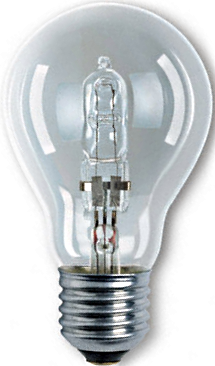Photo by Flourish Design & Merchandising of KEYLIME Photo by Flourish Design & Merchandising of Bellies
Incandescent
Pros
·
Inexpensive
at the outset with affordable fixtures
·
Easy
to use, replacing lightbulbs is a breeze
·
Warm
light
Cons
·
High
energy cost, these are the least efficient bulbs
· Getting
harder to find and buy, some areas have even banned them
· High
heat, don't touch it while it's on!
·
Potential product
damage
· Low
lifespan, they need ot be replaced often (high future cost)
Halogen
Pros
· Slightly
more efficient than incandescent (only about 15% better)
· Low
cost at the outset
Cons
· Still
high energy consumption
· High
heat, again... ouch!
· Potential product
Dmage
·
Low
lifespan, needs frequent replacement (high future cost)
·
Bulbs are difficult to replace as you can't touch them directly
Compact Fluorescent
Pros
· Middle
price point
· Saves
energy, more efficient than the previous two by quite a bit
·
Easy
to use
·
Last
longer, less frequent replacement
·
Fits
into incandescent fixtures
Cons
·
Takes
time to warm up, don't be late in the morning or your customers won't be able to see for a while!
· Cool,
unflattering light or pinkish light
·
Pricier
than Incandescent and still need to be changed fairly regularly (in comparison to following options)
·
Unattractive
appearance as some (including me) don't like the spiral
·
Not
available in spot lights and non-dimmable
· Unstable/flickering light
·
Contains
some mercury
Ceramic Metal-Halide
Pros
· High
energy savings
·
Great
colour quality
·
Fits
halogen fixtures (if you were using halogen before, there's no need to replace the fixtures)
· Long
lifespan, low maintenance (low future cost)
·
Different
sizes and shapes, including spot lights
Cons
· Expensive
at the outset (cost will be recouped over time)
LED
Pros
· Highest
energy savings
· Can
be purchased in dimmable options
·
Available
in a variety of colour temperatures, including warm
· Available
in a variety of types, including spot lights
·
Attractive
fixtures are available
· Long
lifespan, low maintenance (low future cost)
·
Lower
operating temperatures, extremely low likelyhood of damage to your product from light or heat!
Cons
·
Expensive
at the outset (cost will be recouped over time)
While most of the headings above link to wikipedia.org, I didn't use it as an info source, I promise! (It is the easiest most consistent to link readers to for more inormation though.)
Here is a list of sources if you're looking for more information:
If you have any more questions about lighting or retail design feel free to leave a comment, visit the Flourish Design & Merchandising Website, or send us an email.










